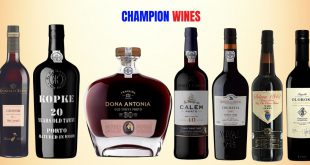
Veronique Guibert de La Vaissiere, co-founder of Mas de Daumas Gassac, is an ethnologist who after receiving her Master’s Degree in Psychology and her Ph D in Ethnology, dedicated herself to doing field research in Ireland since 1968. Her book Les quatre Fetes d’ouverture de Saison de l’Irlande ancienne expounds some of her work.
Last week, Veronique Guibert de La Vaissiere, proprietor of Mas de Daumas Gassac, visited Singapore where her son Basile and daughter-in-law Marie-Alix de Grully live.
The co-founder of the famed Languedoc estate cooked a delicious dinner with recipes from her book Savours and Flavours of Mas Daumas Gassac.

While we were having aperitifs, including the newly released Plaisir de Gassac (see Wine of the Day), we savoured Red Peppers a la Catalane from Page 47 of the book. Later, when we sat down, we were treated to delicious Aubergines Stuffed with Onions from Page 91.
Then it was the turn of Scrambled Eggs with Wild Asparagus, hand-carried all the way from Daumas Gassac. The green vegetable was so fine they looked more like chives. A stunning revalation!
As if all that was not enough, we were spoilt with a roast lamb that went perfectly with a Daumas Gassac red, a complex wine comprising many varieties but dominated by that quintessential Bordeaux grape, cabernet sauvignon.

Red Peppers a la Catalane

Scrambled Eggs with Wild Asparagus from Mas de Daumas Gassac.
It was in 1972 that Veronique and Aime Guibert (1924 – 15 May 2016) planted their first cabernet sauvignon in Mas de Daumas Gassac. Being wise and far-sighted, they knew that uniformity is the enemy of quality. So, instead of getting plant material from a single source – which would had been so convenient – they bought different vines from many a top Bordeaux estate.
The selection was based on quality and diversity, not high yield and resistance to disease. You take risks if you want to achieve something special. Between 1972 and 1978, the Guiberts also started the building of a winery and a vat room on the site of an ancient Gallo-Roman mill.
Having myself visited Daumas Gassac, I can vouchsafe it is very cool and there even during summer because underneath are cold water springs from the Gassac River.
On 13 September 1978, Emile Peynaud (29 June 1912 – 18 July 2004), perhaps the greatest oenologist of his time and the world’s first modern consultant winemaker, visited Daumas Gassac.
After his trip, the professor went back to Bordeaux to resume his teaching at the university (and consultancy work for the chateaux of Bordeaux). But, he had agreed to consult for the Languedoc property. For free. Via the telephone (the mobile phone was not yet invented then).
When journalists asked why he was willing to advise an unknown, obscure area – Aniane – in the Languedoc, the good professor did not hesitate in his repy.
“I advise the greatest French wines but, for the first time, I was lucky to witness the birth of a Grand Cru”.
So it has remained. Mas de Daumas Gassac, the First Growth of the Languedoc.

A Singapore sunset from the home of Marie-Alix & Basile Guibert.

